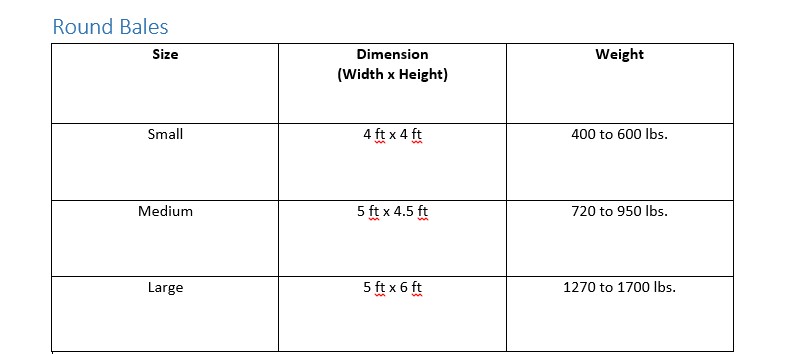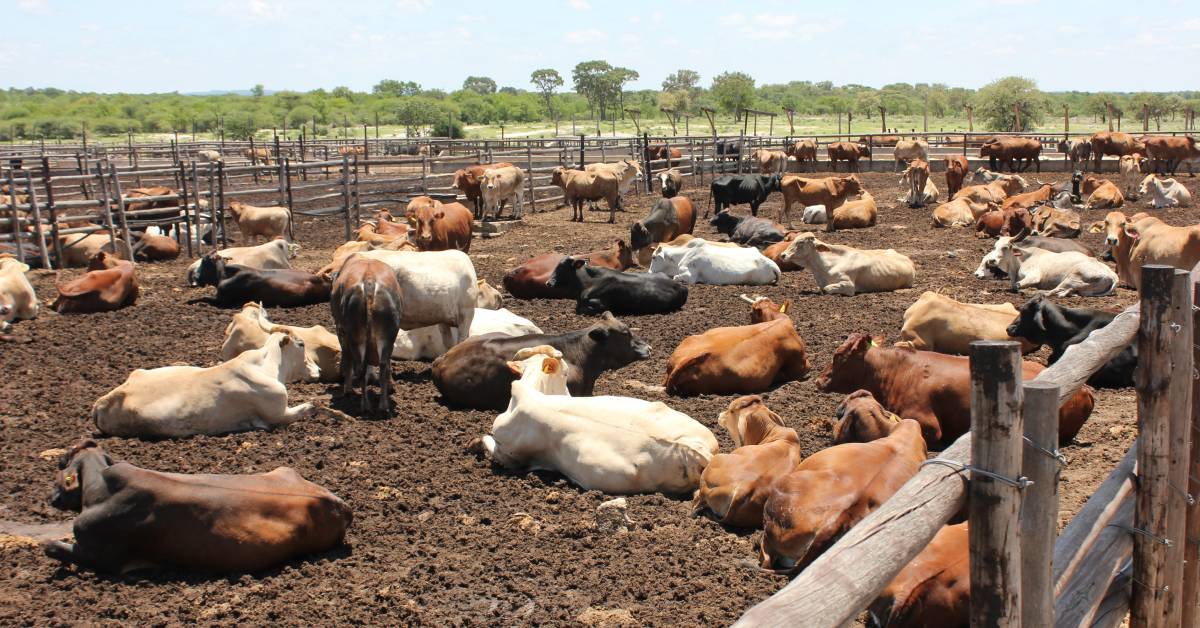Large square bales of hay come in different sizes and values. Typically, they come in three sizes: ( 3 inch x 3 inch x 8 inch), (3 inch, 4 inch x 8 inch), and (4 inch x 4 inch x 8 inch). In pounds, they range from 805 to 1,580 pounds.
Hay bale sizes and weight:

Source: Dairypastureconsumptioncalculator
4x4x8 hay bale weight
4x4x8 hay bale weighs around 1800 to 2000 lbs.
Farmers usually have a hard time knowing how much their bales of hay weigh. It is a crucial aspect of farming, and mastering it results in efficient management, especially in the winter season when pastures do not provide enough for the animals to graze.
Knowing if you have enough fodder for all your animals is necessary in order to fulfill their feed requirements. There are some essentials that, as a rancher, you must know about hay and a hay bale’s weight.
Mostly, farm animals graze from pastures, and this is considered their typical diet. But what to do when these pastures do not provide enough for your animals due to some weather conditions? This is where you utilize hay as a food source.
What is Hay?
Legumes, dried and cut grass, and other plants that can be used as a food source for animals that graze, such as sheep, cows, horses, goats management, etc., are called Hay. It can also be fed to smaller animals such as guinea pigs and rabbits. Hay is green and not too rough, and these are its satisfactory qualities. Bales are often stacked if they are large in size and are covered with plastic in order to keep them green and healthy.
Categories of Hay
-
Grass
Some of the common grass hays include timothy, bluegrass, Bermuda, orchard grass, and brome. In many parts of the country, ryegrass, reed canary, and fescue grass are found. Hays of grass have low to medium levels of protein content.
Because it has a low level of lysine and amino acid, combining it in a feeding plan is a better choice. They are rich in fiber content as compared to other kinds of hay. Orchardgrass, Bermuda, and timothy have more stalks; hence, they have a high level of fiber in them.
-
Legume
These include birdsfoot, cowpeas, soybean, alfalfa, trefoil, lespedeza, and many types of clover such as red, alsike, and ladino. These are richer when it comes to nutritional content than grasshays. They have a high level of digestible energy, vitamin A, and calcium.
One of the most popular legumes is Alfalfa, which is palatable hay. The main reason for its popularity is that it is being harvested and available in nearly every state of the United States. It has long-strand fiber that is identical to those in grass, but if compared to grass, it has three times higher levels of calcium and twice the amount of protein.
It is considered a perfect choice to feed young and working animals as their nutritional requirements are high.
-
Cereal Grain Crops
Forage and oat hay are types of cereal grain crops. When they are cut while they are lush green, and before they mature completely, they make great hay.
-
Mixed Grass and Legume
To maintain a healthy diet for your animals, it is better to choose hay that is rich in protein and other nutrients; therefore, making use of both legumes and grass is a wise choice.
A high quantity of lysine found in legumes enhances the quality of grass hays, and the value of legumes improves when paired up with grass hays that have a high level of methionine.
How Much Does A Bale Of Hay Weigh?
Depending on the size and density, the weight varies. The machine binds and packs the hay in a specified dimension into bales. It does this without any particular focus on the weight.
Each bale of hay has a certain moisture content that has a notable impact on its weight. Due to this, it is mostly very difficult to produce bales of identical weights. To measure the accurate weight of the bales of hay, it is better to use a weighing scale.
Let’s have a look at a guideline that provides information about how much a bale of hay usually weighs according to its dimension and size.
Rectangle Bales
| Size | Dimension(L x H x W) | Weight |
|---|---|---|
| 2 stringed bale | 36 inches x 19 inches x 16 inches | 40 to 75 lbs. |
| 3 stringed bale | 44 inches x 22 inches x 15 inches | 100 to 140 lbs. |
| Half ton | 6 ft x 4 ft x 3 ft | 1000 lbs. |
| 1 Ton | 8 ft x 4 ft x 4 ft | 2000 lbs. |
Round Bales
| Size | Dimension(Width x Height) | Weight |
|---|---|---|
| Small | 4 ft x 4 ft | 400 to 600 lbs. |
| Medium | 5 ft x 4.5 ft | 720 to 950 lbs. |
| Large | 5 ft x 6 ft | 1270 to 1700 lbs. |
What Is the Difference between Round Bales and Rectangular Bales?
Bales are packed in two forms: round and rectangular. And each form has its pros and cons. Let’s understand how one form is different from the other and know which form you should choose for your ranch.
| Rectangular Bale | Round Bale |
|---|---|
| Feeding animals can be labor-intensive. | Easy to feed animals. |
| When stacked, it is sturdy. And they can be placed/piled on one another. | Because it lacks stability, it is difficult to be stacked. |
| Because of its good stability. It is easier to transport. | It is harder to transport as it tends to roll around if flatbed trucks are used for its transportation. |
| If not stored correctly in a hayrick, it can spoil. | Its tight compression makes it less vulnerable to spoilage. |
FAQs
How much does a large square bale of hay weigh?
Round bale weight chart
How much does a round bale of hay cost?
Round bales of hay that are larger in size are being sold for $75 to $90 each ton. Alfalfa-grade bales of hay cost around $140 to $165 per ton. Meanwhile, grass hay bales are sold for $125 to $150 per ton.
Strawbale sizes and weight
Straw bales are basically produced on farms, and they are called field bales. They come in different sizes ranging from 2-string (18 inches or 460mm), either 14 or 16 inches (350mm to 400mm) high and 32 to 48 inches (0.8 to 1.2m) long, to 3-string that are 21 in wide, by 16 inches high, by 3 to 4 feet long. They are also called commercial bales.









